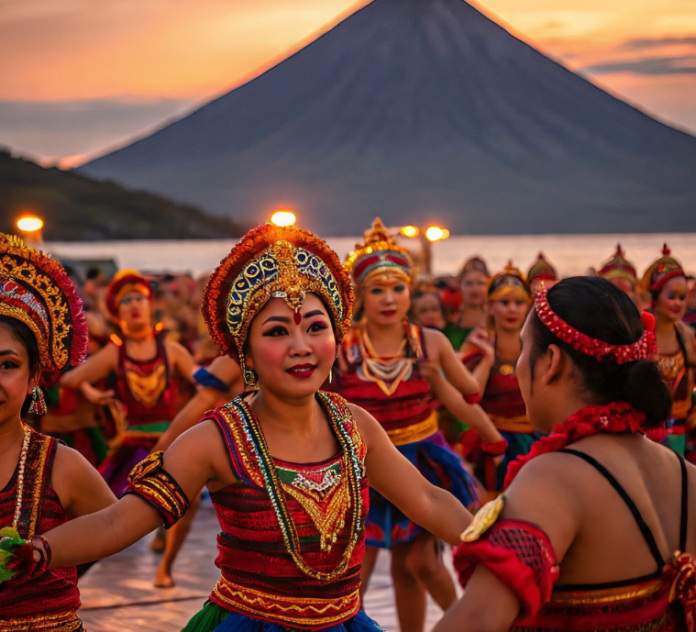The Philippines stands as one of the most captivating countries in Southeast Asia. With its crystal-clear beaches, lush rainforests, and vibrant traditions, it’s a destination where nature and culture beautifully blend. Tourists from around the world visit to experience its warm hospitality and breathtaking landscapes. Beyond tourism, the Philippines boasts a fast-growing economy, dynamic cities, and a youthful population shaping the nation’s future.
This tropical paradise offers more than just scenic beauty. From bustling urban centers like Manila to serene islands like Palawan, every corner of the Philippines tells a unique story. Let’s dive deeper into what makes this country truly special—its people, culture, economy, and undeniable charm.
The Geography and Natural Beauty of the Philippines
Located in the western Pacific Ocean, the Philippines is an archipelago of over 7,000 islands. Its geographical diversity is astonishing, ranging from active volcanoes and coral reefs to rice terraces and dense jungles. The country’s tropical climate supports lush biodiversity and a variety of marine life.
Visitors often fall in love with its world-famous beaches such as Boracay, Siargao, and El Nido. Each island offers different experiences—from surfing and diving to hiking and island-hopping. The natural beauty of the Philippines not only draws travelers but also supports local economies through tourism and sustainable development.
A Nation with Deep Cultural Roots
The culture of the Philippines reflects a rich blend of indigenous, Asian, and Western influences. Centuries of trade, colonization, and migration shaped the nation’s identity. Filipino traditions such as Bayanihan (community spirit) and Fiestas (festivals) showcase its people’s warmth and unity.
Language plays a central role in this identity. While Filipino and English are the official languages, there are more than 170 regional dialects spoken across the islands. This linguistic diversity mirrors the country’s multifaceted heritage and contributes to its colorful character.
Economic Growth and Emerging Industries
Over the years, the Philippine economy has shown remarkable resilience and progress. Supported by strong domestic demand, a growing digital sector, and a robust service industry, the country has become one of Asia’s most promising economies.
Sectors like business process outsourcing (BPO), information technology, and tourism continue to boost employment and innovation. The rise of digital finance, renewable energy, and e-commerce further enhances its global competitiveness. With a young and skilled workforce, the Philippines remains a key player in Southeast Asia’s economic future.
Tourism: A Jewel of the Philippine Identity
Tourism in the Philippines isn’t just about visiting places; it’s about creating unforgettable memories. Every year, millions of visitors explore its scenic destinations, from the Chocolate Hills of Bohol to the Underground River in Palawan.
Adventure seekers can surf in Siargao, dive in Tubbataha Reefs, or trek the Banaue Rice Terraces. Meanwhile, cultural enthusiasts enjoy historical sites like Intramuros in Manila and Vigan’s Spanish-era architecture. Tourism contributes significantly to local livelihoods, empowering small businesses and communities across the islands.
Filipino People: The True Strength of the Nation
The greatest treasure of the Philippines is its people. Known for their resilience, optimism, and kindness, Filipinos embody the spirit of hope and hospitality. Whether in rural villages or modern cities, you’ll always find a smile and a helping hand.
Family values and strong community ties remain at the heart of Filipino life. Even during challenges, their faith and unity shine through. This deep sense of compassion has made Filipinos beloved around the world, especially among overseas communities who carry their culture with pride.
The Role of Technology and Innovation
The Philippines is embracing digital transformation at an impressive pace. With a tech-savvy population, mobile connectivity, and active social media use, innovation drives economic and social growth. Startups in fintech, logistics, and e-commerce are shaping the future of business in the region.
Government programs promoting digital literacy and tech investment are helping bridge the urban-rural divide. From online education to smart city projects, technology is redefining opportunities for millions of Filipinos. This shift strengthens the nation’s vision for a sustainable and inclusive future.
Challenges and Pathways to Progress
While the Philippines continues to grow, challenges remain. Issues like infrastructure gaps, environmental threats, and inequality need consistent attention. However, strong leadership and citizen engagement are driving meaningful change.
Sustainable tourism, green energy, and education reforms are among the top priorities. By investing in people and innovation, the Philippines is paving its way toward lasting progress and global recognition. The future looks bright for this resilient island nation.
Conclusion
The Philippines is not just a destination—it’s a journey of discovery, emotion, and connection. From its dazzling landscapes to its vibrant traditions, every aspect of the country reflects a story worth exploring. As it continues to evolve, the nation’s charm remains timeless, rooted in its people and culture.
Whether you’re planning to travel, invest, or simply learn more about this tropical paradise, now is the perfect time to explore the Philippines. Experience its beauty, embrace its warmth, and be part of its growing legacy.
FAQs
- What makes the Philippines unique among Asian countries?
The Philippines stands out for its island geography, diverse culture, and strong English-speaking population, blending Asian traditions with Western influences. - What are the top tourist destinations in the Philippines?
Popular destinations include Boracay, Palawan, Bohol, Cebu, and Siargao, each offering unique natural and cultural attractions. - Is English widely spoken in the Philippines?
Yes. English is one of the official languages, making communication easy for travelers and international businesses. - What is the best time to visit the Philippines?
The ideal time is during the dry season, from November to May, when the weather is perfect for beach trips and outdoor adventures. - How is the Philippines preparing for the future?
Through digital innovation, sustainable development, and global partnerships, the Philippines is building a strong foundation for inclusive and long-term growth.


